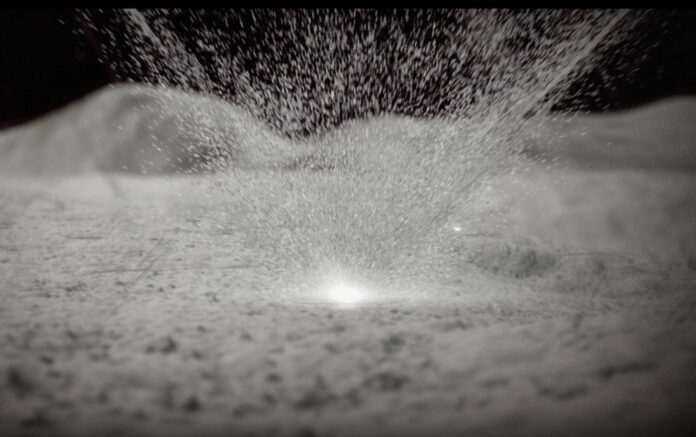One of the few known quasi-satellites of Earth is the near-Earth asteroid Kamo’oalewa (469219). It maintains these dynamics across megayears by switching between quasi-satellite and horseshoe orbital modes on centennial timescales. Its Earth-like orbit and reflectance spectrum similarity to lunar silicates point to its origin on the lunar surface.
A group of scientists from the University of Arizona hypothesized in 2021 that Kamo’oalewa, a newly found near-Earth asteroid, might be a piece of the moon. A different study team at UArizona has discovered that a unique mechanism might have allowed this to occur two years after the startling finding.
In a new study, scientists carry out numerical simulations of the dynamical evolution of particles launched from different locations on the lunar surface with a range of ejection velocities to assess the hypothesis that Kamo’oalewa originated as a debris-fragment from a meteoroidal impact with the lunar surface.
They determined the feasibility of a knocked-off piece of the moon to get into this quasi-satellite orbit. This phenomenon is quite rare. Moon fragments with sufficient kinetic energy to break apart from the Earth-moon system are likewise too energetic to settle in quasi-satellite orbits similar to Earth’s.
The simulations suggest that some lucky lunar fragments could reach such orbits. Kamo’oalewa might be one of those pieces from a recent impact on the moon a few million years ago.
Renu Malhotra, Regents Professor of planetary sciences and a senior author on the paper, said, “Throughout its history, the moon has been bombarded by asteroids, which is evident in the numerous impact craters preserved on its surface. Impact craters are created when asteroids or meteorites crash into the surface of a planet or the moon. Impacts cause lunar material to be ejected from the moon’s surface, but most of that material usually falls back on the moon.”
“Some of the ejected materials fall on Earth, and that’s how we get meteorites from the moon. But a small fraction could escape the gravity of the moon and the Earth and end up orbiting around the sun like other near-Earth asteroids. Numerical simulation suggests that Kamo’oalewa could be one of the even tinier fractions that gained entry into the hard-to-reach Earth’s co-orbital space.”
“The study’s findings could help understand more about near-Earth asteroids, which are considered a hazard to Earth. More detailed studies of Kamo’oalewa and determining this asteroid’s origin in a specific impact crater on the moon will provide useful insights on impact mechanics.”
Jose Daniel Castro-Cisneros, the study’s lead author and a graduate student in the Department of Physics said, “In the future, the team is planning to identify the specific conditions that allowed the orbital pathway of Kamo’oalewa. The group also aims to determine Kamo’oalewa’s exact age.”
Malhotra said, “We only looked at Kamo’oalewa’s spectrum because it was in an unusual orbit. If it had been a typical near-Earth asteroid, no one would have thought to find its spectrum, and we wouldn’t have known Kamo’oalewa could be a lunar fragment.”
Journal Reference:
- Castro-Cisneros, J.D., Malhotra, R. & Rosengren, A.J. Lunar ejecta origin of near-Earth asteroid Kamo’oalewa is compatible with rare orbital pathways. Commun Earth Environ 4, 372 (2023). DOI: 10.1038/s43247-023-01031-w
